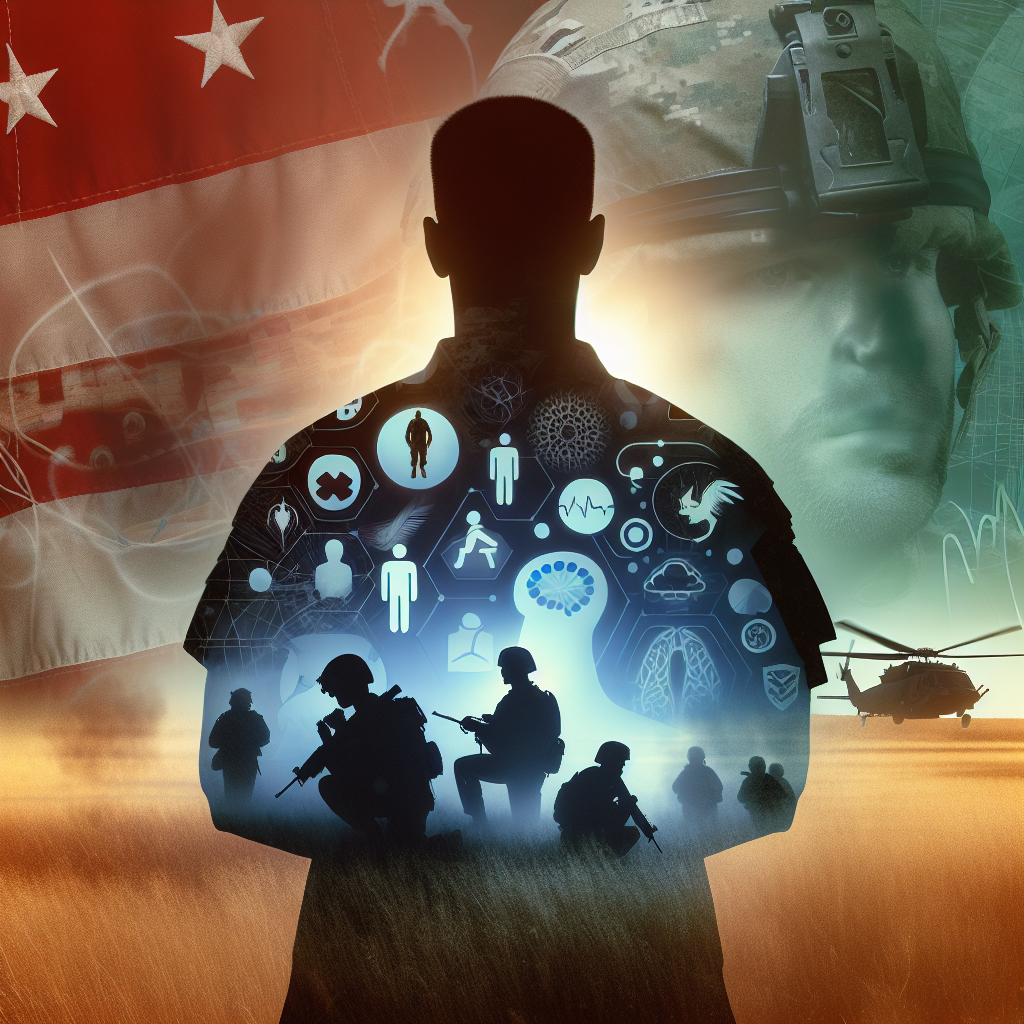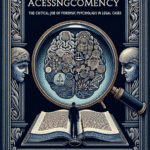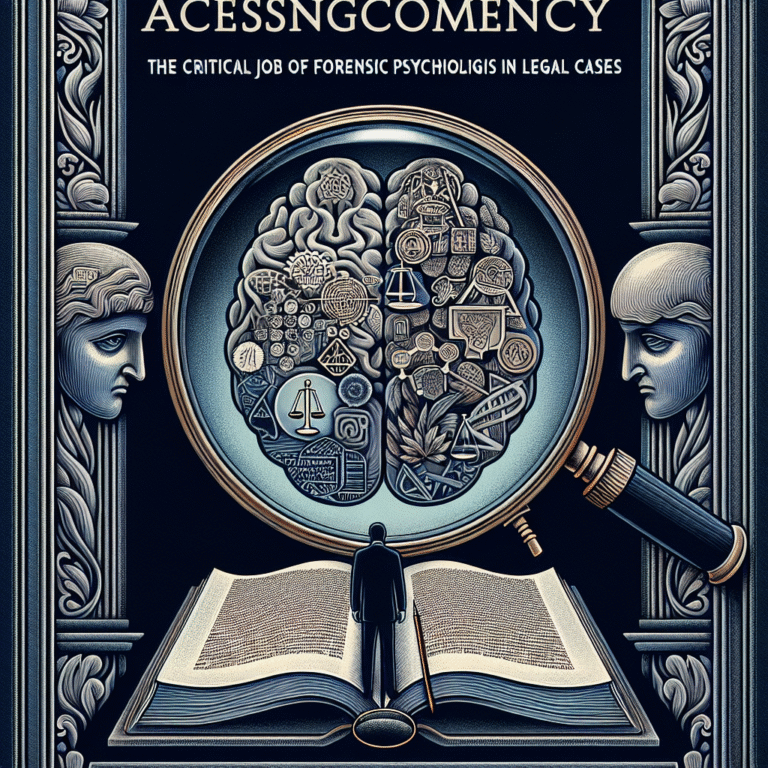
Introduction
Every year, millions of service members are deployed into environments filled with extraordinary challenges. While the physical aspects of combat present significant risks, the psychological toll on these individuals is often less visible yet incredibly profound. Understanding Coping with Combat: The Psychological Impact of Warfare on Service Members is not just a matter of academic interest; it’s a crucial step in supporting the mental health and well-being of those who serve.
Combat isn’t merely a series of events or battles; it’s an indelible experience that shapes the lives of service members long after they return home. The emotional scars can linger, complicating relationships, careers, and personal wellbeing. As the world begins to recognize the invisible wounds of warfare, essential insights into coping mechanisms become vital. This comprehensive examination aims to provide valuable perspectives on how service members can navigate the psychological challenges of combat while shedding light on the resources available for their recovery.
Understanding the Psychological Impact of Warfare
The Nature of Combat Stress
As service members face the chaos of warfare, they must navigate high levels of stress that can lead to various psychological conditions. Combat stress can manifest in multiple ways, including anxiety, depression, and, in severe cases, Post-Traumatic Stress Disorder (PTSD).
Table 1: Common Psychological Conditions Resulting from Combat
| Condition | Description |
|---|---|
| Combat Stress Reaction | Acute stress response to combat; temporary and can vary in severity |
| PTSD | Persistent re-experiencing of traumatic events, emotional numbing, and hyperarousal |
| Depression | A pervasive feeling of despair or hopelessness, affecting daily functioning |
| Anxiety Disorders | Increased fear and worry about daily life situations and triggers |
Personal Stories: Case Studies of Resilience
Consider the story of Sergeant James, a veteran who served three tours in Iraq. Initially, he showed no signs of mental distress. However, as time passed, he struggled with sleep disturbances and sudden outbursts of anger. After reaching out to a military mental health professional, he discovered the power of Coping with Combat: The Psychological Impact of Warfare on Service Members is nuanced and multi-faceted. Through therapy and peer-support groups, he learned practical coping strategies that transformed his approach to everyday challenges.
The Role of Community and Family Support
Strengthening community ties can be an essential component in aiding recovery. Family support, in particular, plays a critical role in helping service members cope. Providing an environment of understanding and patience can facilitate healthier communication about experiences in combat, allowing for emotional healing.
Effective Coping Mechanisms
Mindfulness and Resilience Training
Combat veterans often endure significant trauma, but various techniques can aid healing. Mindfulness and resilience training are among the most effective strategies. Through mindfulness practices, individuals can become more aware of their thoughts and feelings, which can reduce anxiety.
Mindfulness Techniques in Practice
| Technique | Description |
|---|---|
| Meditation | Dedicated time for quiet reflection and mental clarity. |
| Deep Breathing | Focusing on breath can calm the mind and lower anxiety levels. |
| Journaling | Writing about experiences plays a crucial role in processing emotions. |
Professional Support: Therapy Options
Engaging with a mental health professional can significantly enhance coping strategies. Various forms of therapy, including Cognitive Behavioral Therapy (CBT), Exposure Therapy, and Eye Movement Desensitization and Reprocessing (EMDR), have been shown to be effective.
Case Study: The Use of CBT
Take the case of Private First Class Sarah, who struggled with PTSD after returning home. By participating in CBT, Sarah learned to reframe her thoughts around her combat experiences, which facilitated a healthier outlook and gradual recovery. This illustrates a powerful aspect of Coping with Combat: The Psychological Impact of Warfare on Service Members—the importance of tailored therapeutic approaches.
Resources for Continued Support
Military and Veteran Organizations
Numerous organizations are dedicated to providing resources and avenues for healing. Examples include the Department of Veterans Affairs (VA), the Wounded Warrior Project, and various nonprofit groups that specialize in mental health support.
Table 2: Notable Organizations
| Organization | Services Offered |
|---|---|
| Department of Veterans Affairs | Medical services, mental health programs, support networks |
| Wounded Warrior Project | Advocacy, rehabilitation services, peer support |
| Give an Hour | Volunteer mental health services for veterans and their families |
Online Support Communities
In the digital age, service members can access a wealth of online resources. Websites and forums often provide peer support and anonymity for those seeking comfort in shared experiences.
The Importance of Combating Stigma
Addressing Misconceptions
Despite progress, stigma surrounding mental health problems remains. It’s vital to educate both the military community and the public about the realities of mental health issues resulting from combat.
Campaigns and Initiatives
Several initiatives aim to combat stigma associated with seeking help. Programs like “Make the Connection” provide veterans with information, inspiration, and connection to help them understand experiences and find support.
Conclusion: Moving Forward Together
The journey through Coping with Combat: The Psychological Impact of Warfare on Service Members is undoubtedly complex, yet it is filled with hope. The narratives of resilience and recovery underscore the human capacity for healing. By embracing supportive systems, utilizing effective coping strategies, and shedding stigma, we can collectively enhance the psychological well-being of our service members.
Let us honor our heroes not just by recognizing their sacrifices but by actively participating in their healing journeys. Every small action contributes to a broader movement towards understanding and acceptance.
FAQs
1. What is the most common psychological condition faced by veterans?
Answer: Post-Traumatic Stress Disorder (PTSD) is one of the most prevalent conditions among veterans, often impacting their daily lives and relationships.
2. How can service members recognize signs of combat stress?
Answer: Signs include heightened anxiety, emotional numbness, sleep disturbances, and changes in mood or behavior. It’s essential to seek help if these symptoms persist.
3. What coping strategies are most effective for veterans?
Answer: Mindfulness techniques, therapeutic interventions like CBT, community support, and maintaining a healthy lifestyle are all proven coping strategies.
4. Why is stigma a significant barrier for veterans seeking help?
Answer: Stigma can deter individuals from seeking the help they need because of fear of judgment or reprisal, which can exacerbate their conditions.
5. Where can veterans find resources for mental health support?
Answer: Veterans can access resources through organizations like the Department of Veterans Affairs, the Wounded Warrior Project, and various online support communities.
By addressing the multi-faceted challenges of coping with combat, we not only honor the experiences of service members but also equip them with the tools necessary for thriving in life post-service. It’s time to advocate for mental health awareness and pave the way for healing, resilience, and hope.















